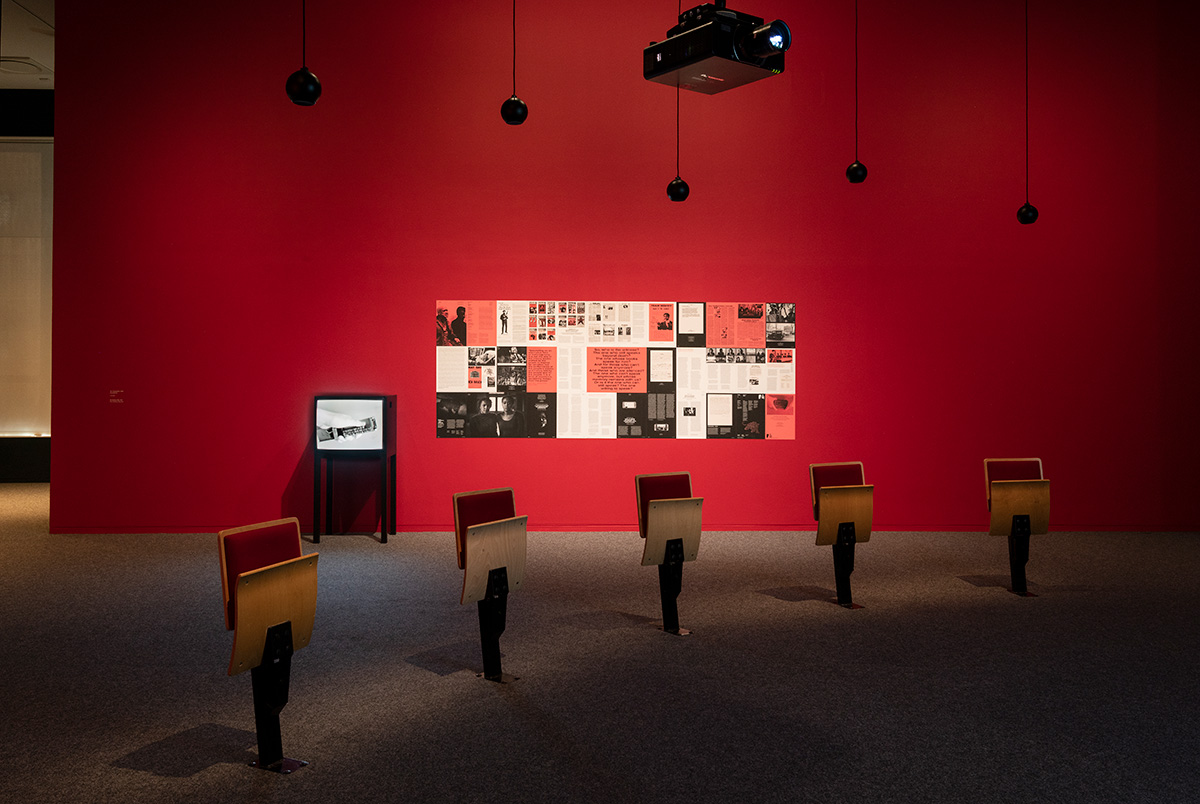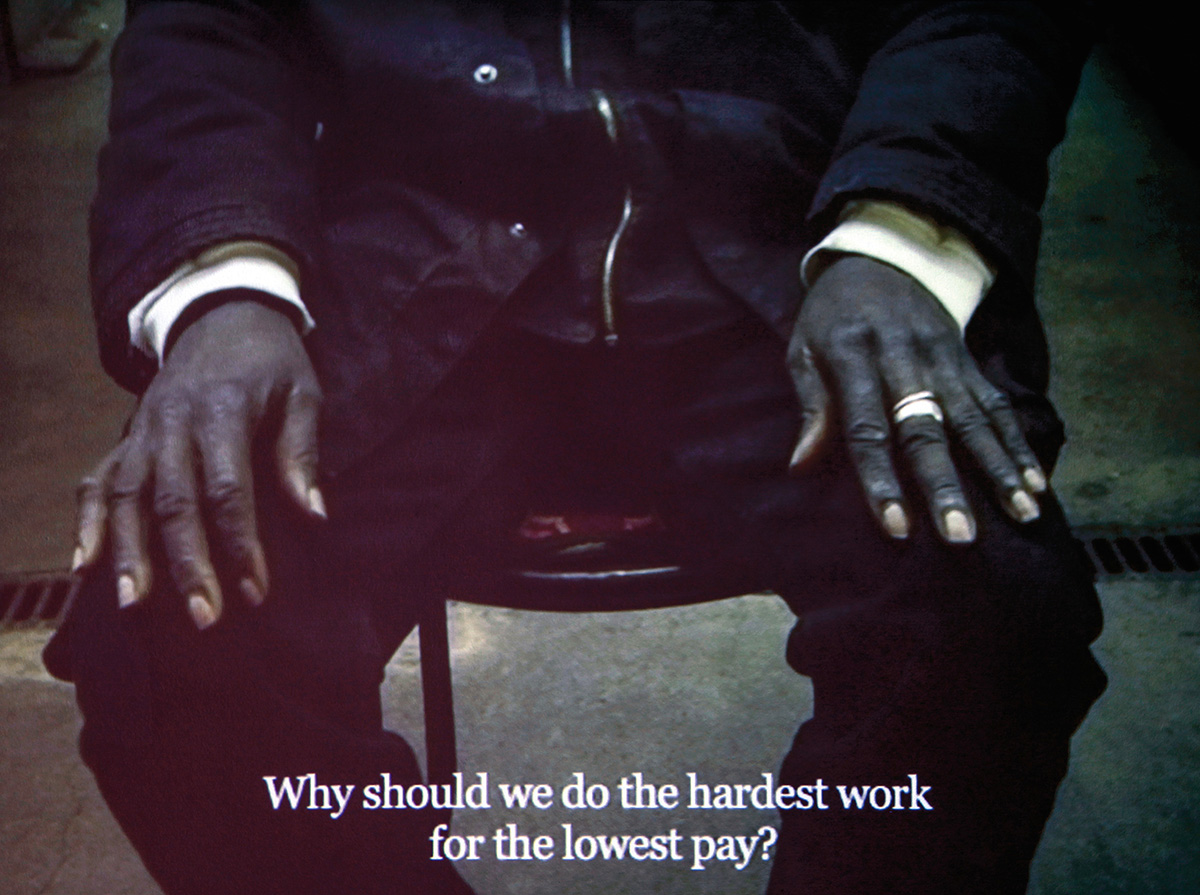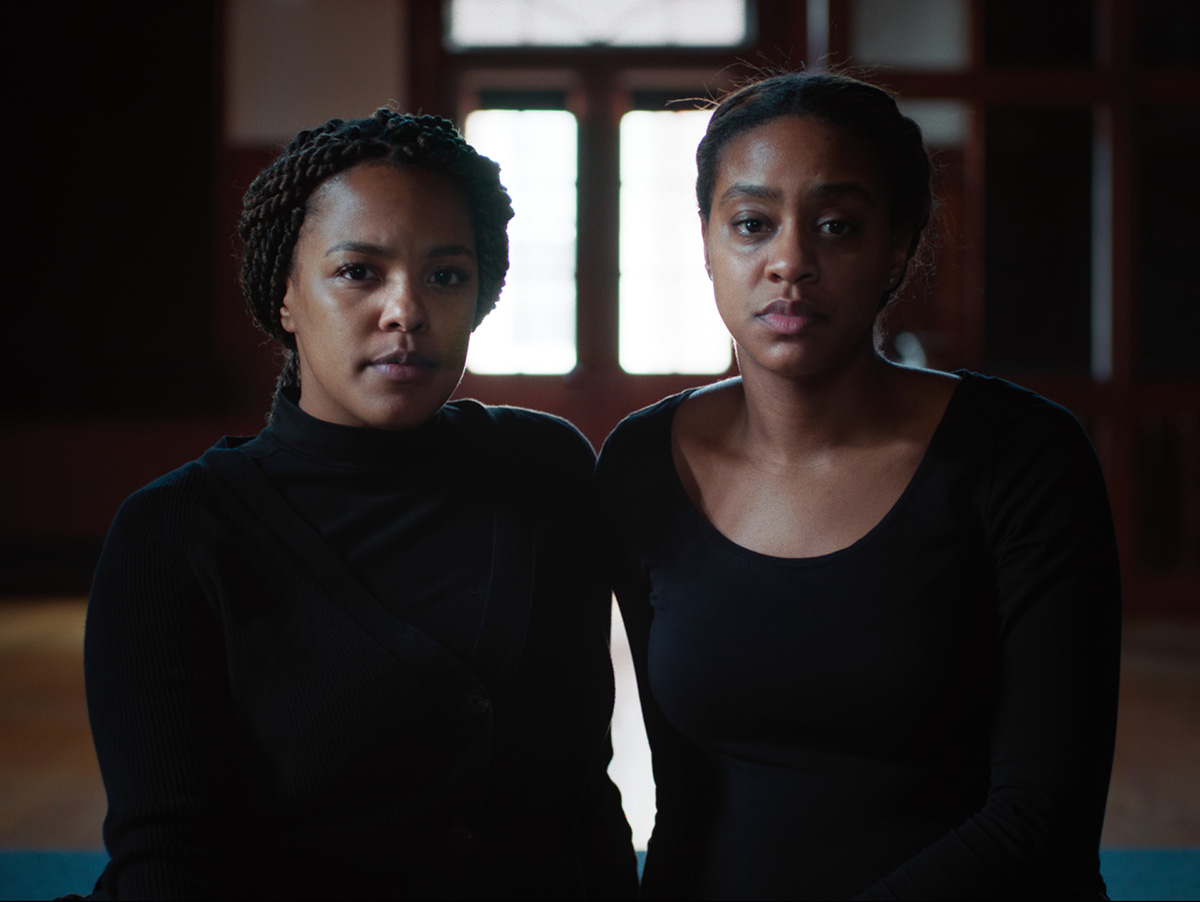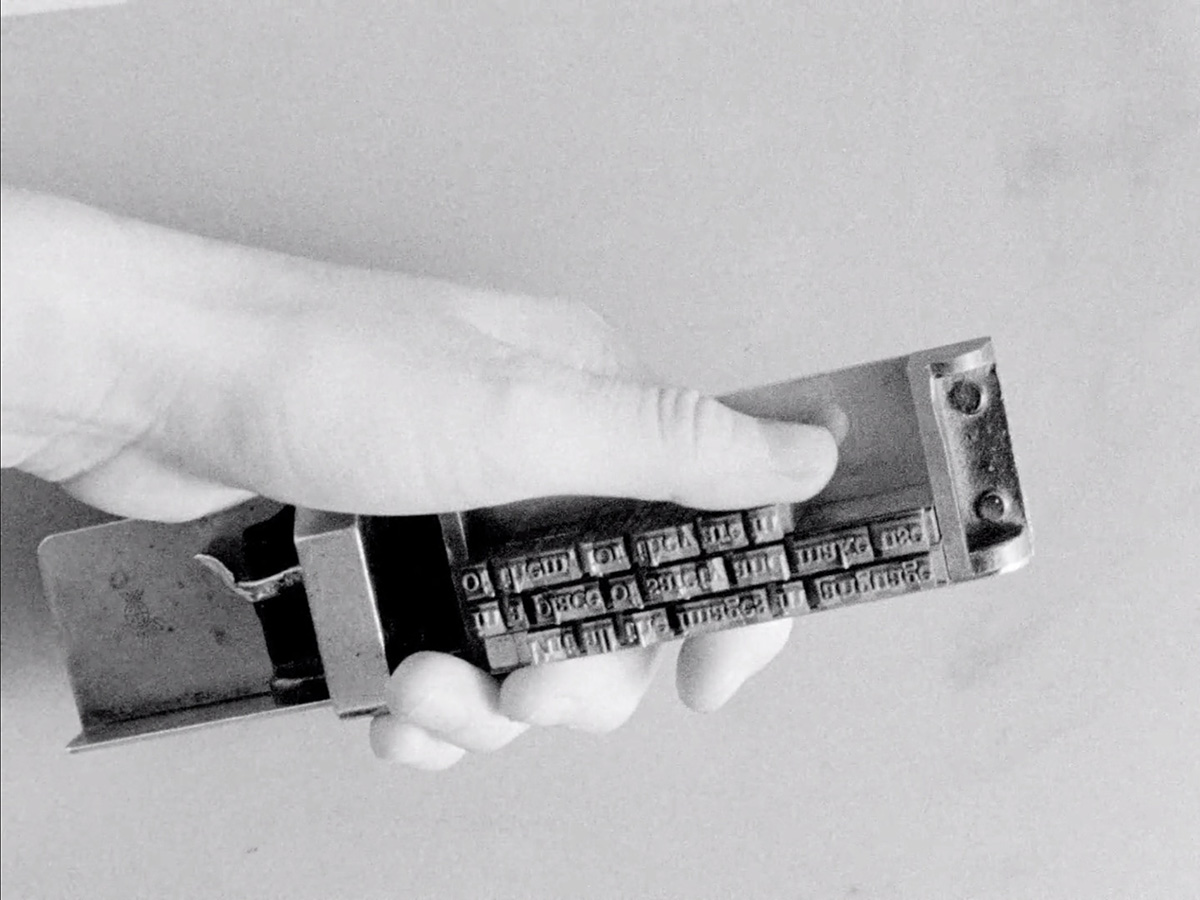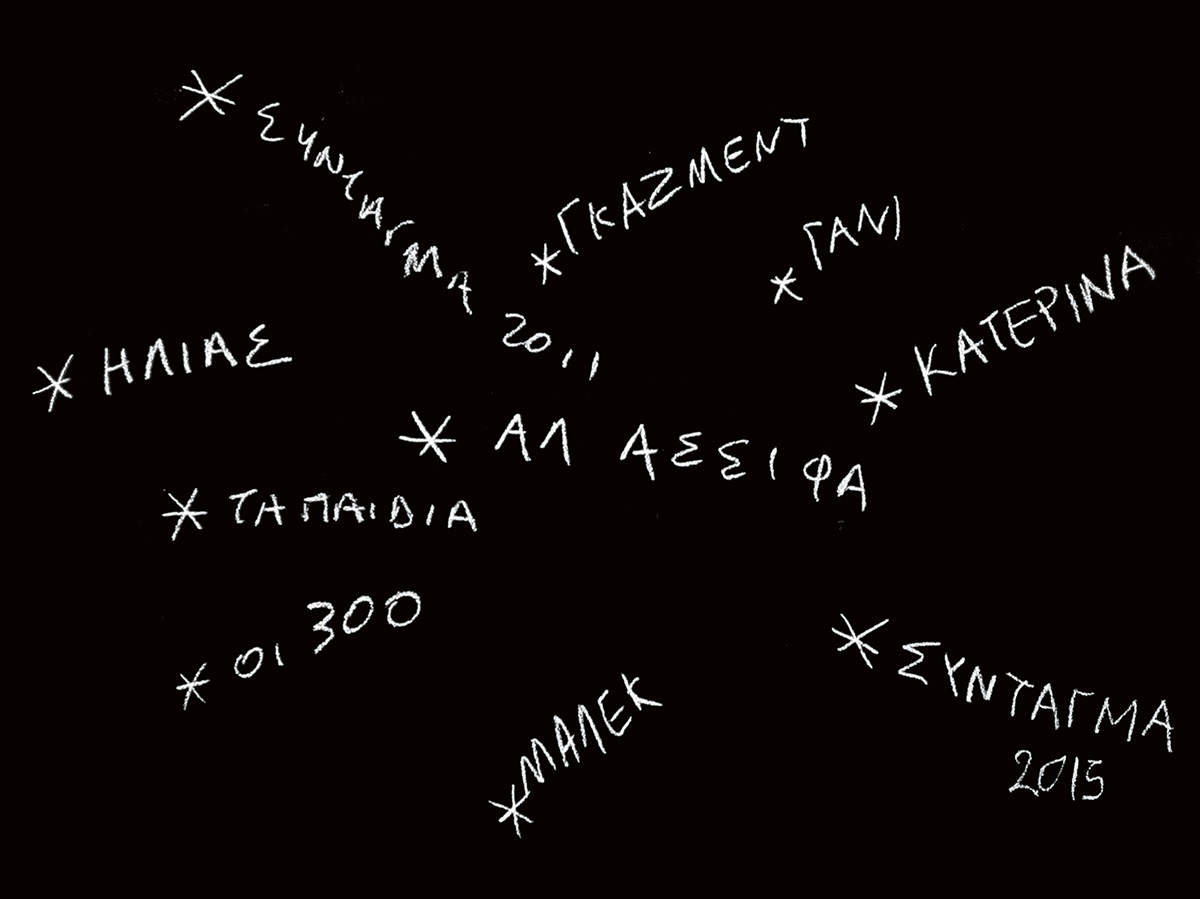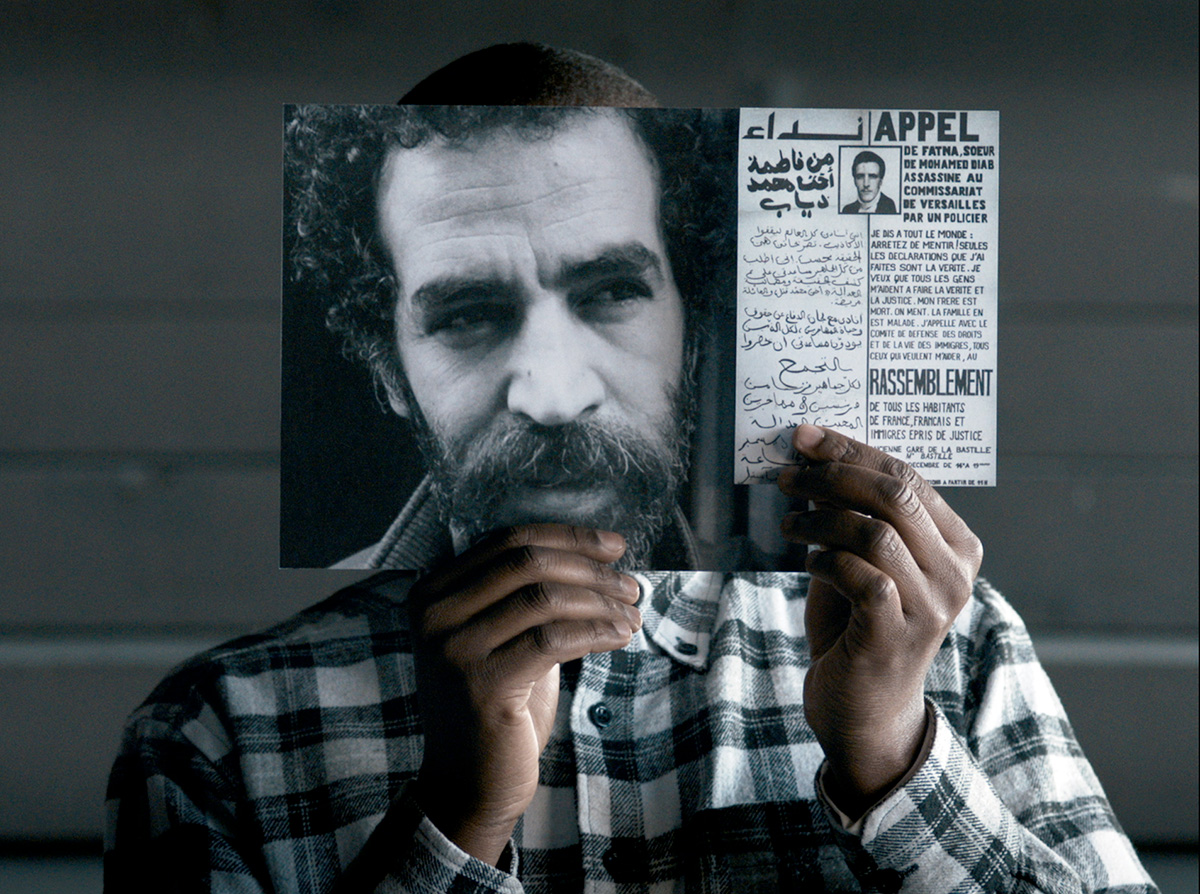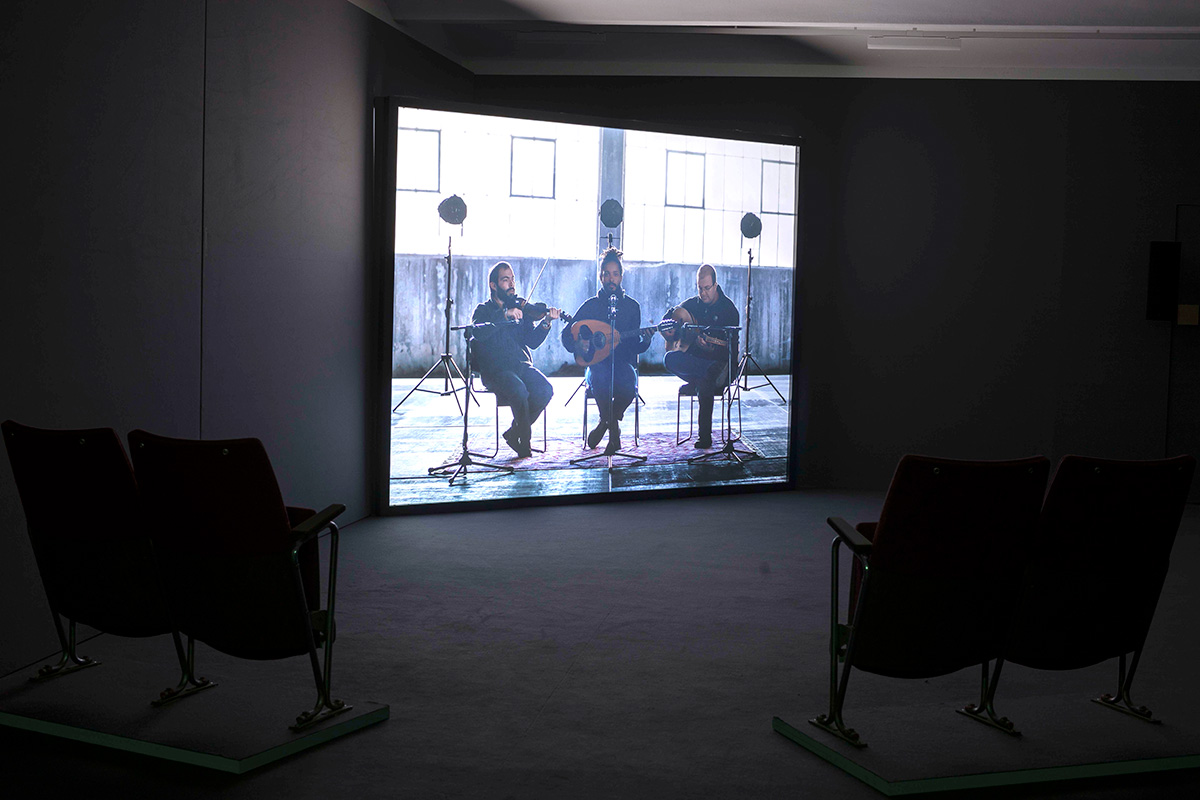PRESENTATION: Bouchra Khalili-Stories Within Stories
 In her work in film, installation, and print Bouchra Khalili has spent over ten years examining strategies and discourses of resistance of minorities, elaborating platforms from which their voices can be heard. Her protagonists speak from their own personal situations, formulate narratives of protest in their own languages and gradually join together to form one large, collective voice.
In her work in film, installation, and print Bouchra Khalili has spent over ten years examining strategies and discourses of resistance of minorities, elaborating platforms from which their voices can be heard. Her protagonists speak from their own personal situations, formulate narratives of protest in their own languages and gradually join together to form one large, collective voice.
By Efi Michalarou
Photo: Bildmuseet Archive
In her filmic practice Bouchra Khalili combines the many different micro-narratives with photographs, moving image, animations, and sounds, from multiple sources and eras, into a multifaceted whole. The exhibition “Stories Within Stories”, which is produced by Bildmuseet, also reflects her interest in grassroots’ media and how speech, typography, poetry and street theatre have amplified voices that would not otherwise be heard. Her video installation “22 Hours” has its starting point in Jean Genet’s lasting support for revolutionary movements: in his writings the French author repeatedly expressed solidarity with the oppressed from all over the world, referring for example to the Black Panther Party for Self Defense, the civil rights movement founded in 1966 for African-American rights. In Bouchra Khalili’s video installation, two African-American women question the legacy of the African-American struggle for equal rights then and now, as well as well the position of the radical ally, as embodied by Genet. What traces remain of this history? How can we describe the essential link between the power of language and issues of self-representation? How do our history and its poetry influence our current existence and what do they tell us of the spirit of our time? Bouchra Khalili also presents “The Tempest Society”, this was her contribution to documenta 14 in 2017: three Athenians from different backgrounds form a group to examine the current state of Europe. They meet on the stage of a former factory turned into a theatrical space. They call themselves “The Tempest Society” in homage to Al Assifa (in Arabic: “the storm”) a theatre company founded in Paris in the 1970s by North African immigrant workers and French students. Their forgotten legacy is now revived: on a theatre stage the “Tempest Society” demands equal rights, citizen participation and solidarity. In the powerful 8-chanel video installation “The Mapping Journey Project” (2008-11), the formal elements are pared to necessities: a paper map of the world, a hand holding a marker, drawing a pattern of mysterious lines on the map across oceans and borders, a voice of a man or a woman telling a first-person story of immigrating illegally from the Middle East or Africa to Europe in search of a better life. To find her subjects the artist traveled to the arteries of trafficking and trade (Marseilles, Ramallah, Bari, Rome, Barcelona and Istanbul). She didn’t go searching for her subjects but rather waited for an occasion to meet them. In just a few minutes, each person traces and narrates their journeys. At other times, the pen rests on one spot for a while, making a thick pool of ink as a person described having to wait there for months for another boat to come. No matter the language, they all tell horror stories of travel companions dying or moving through miles of desert on foot. Their trips took anywhere from a few months to five years. The work attempts to be neither sentimental nor didactic. While literal maps are the central visual element of “Mapping Journey Project”, they are employed only to be subverted. “Foreign Office” (2015), is made up of a film, a series of photographs and a print. Produced in Algeria, the project is part of the artist’s investigation over the last ten years into the forms and discourses of resistance as expressed by the members of minority groups that arise from these colonial and postcolonial histories. Bouchra Khalili revisits the period spanning from 1962 to 1972 when Algiers became the “capital of the revolutionaries” after Algeria’s independence. The city opened its arms to the many militants of African, Asian and American liberation movements such as the International Section of the Black Panther Party, the ANC (African National Congress), the PAIGC (African Party for the Independence of Guinea and Cape Verde) and even the now-forgotten Popular Front for the Liberation of Oman and the Arab Gulf. Taking as a starting point this facet of Algerian history whose piecemeal transmission, in the form of legend, has frozen it in the past, the film portrays two young Algerians of today who recount this history, questioning its traces and the reasons why it has been forgotten by their generation. Questions surrounding oral tradition, language and their relationship to the story and to history are at the film’s core and reveal an alternative historiography. The series of photographs establishes an inventory of the different places that welcomed these liberation movements based in Algiers, while a map made by the artist reinstates them within the city’s contemporary topography.
Photo: Bouchra Khalili, exhibition view: Stories Within Stories, Bildmuseet 2021-2022, © Courtesy of the artist. Exhibition photo: Mikael Lundgren
Info: Bildmuseet, Östra Strandgatan 30B, Umeå, Sweeden, Duration: 14/10/2021-6/3/2022, Days & Hours: Wed-Sun 12:00-17:00, www.bildmuseet.umu.se
